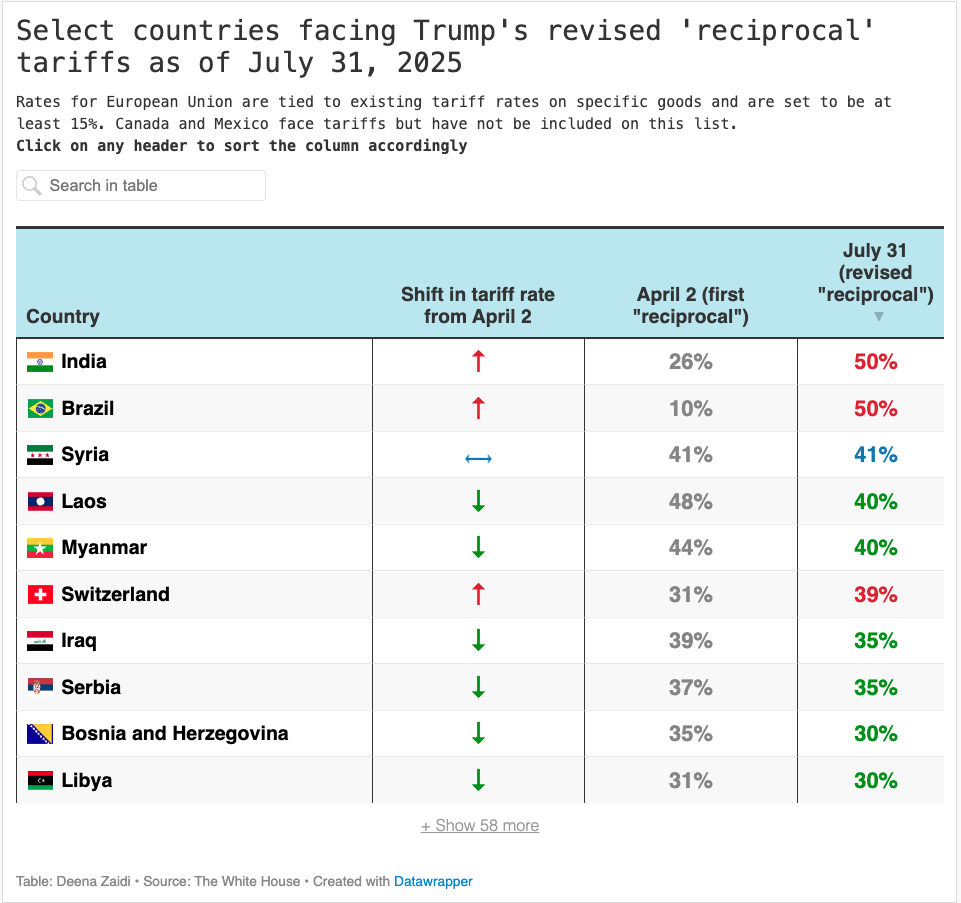Following April 2 “reciprocal” tariffs and months of negotiation, pause and delays, tariffs slate took effect on Thursday, triggering a new era of trade war with revised import rates.
While most countries face the baseline of 10% duty, some of the leading U.S. trading partners are subject to much higher rates.
The U.S. doubled tariff on imports from India, raising the overall tariff to 50% starting Aug. 27. This move is widely seen as a retaliation for India’s continued reliance on Russian oil despite Western sanctions. In 2024, India’s imports into the U.S. were roughly $129 billion.
India now joins Brazil in facing highest tariff rate of 50%.
The latest wave of “reciprocal” rates that go into effect Friday remained in place past midnight (ET) on Thursday as President Trump celebrated the moment in all-caps on Truth Social.
IT’S MIDNIGHT! BILLIONS OF DOLLARS IN TARIFFS ARE NOW FLOWING INTO THE UNITED STATES OF AMERICA!
BRICS and the tariff war
On Wednesday, April 2, or as President Trump calls it “Liberation Day”, America intends on imposing “reciprocal” tariffs by increasing US duties to match the tax rates charged by other countries on American imports. (Here’s the full list).
The April 2 tariffs targeted leading Asian economies like China, India, South Korea and Japan. On July 31, a list of modified “reciprocal” tariffs were released.
With an exception to Russia (which is already under sanction), nearly all founding BRICS members—Brazil, Russia, India, China and South Africa—were slapped with tariffs.
Before the April rollout, President Trump had mentioned a likelihood of 150% tariffs on the original BRICS members, but that was if they tried to de-dollarize.
On February 2025, Trump had said,
There are, like, six of them, and they were trying to destroy our dollar. They were going to say — you know, they wanted to create a new currency. They probably wanted to use the yuan, China.
When asked about BRICS setting up its own currency recently, Trump said,
tell them 150% tariff, plus we’re not going to do business with them, and that includes China.
De-dollarization by any nation typically means relying less on the U.S. dollar, largely due to the uncertainties tied to it.
But talks of a common currency amongst the members of BRICS has been ongoing since the bloc was first founded in 2009. So, whether the nations will create one remains unclear.
U.S. runs a trade deficit (imports more than it exports) with the original members of the BRICS and these numbers are reported by countries and not as a bloc (unlike the EU).
